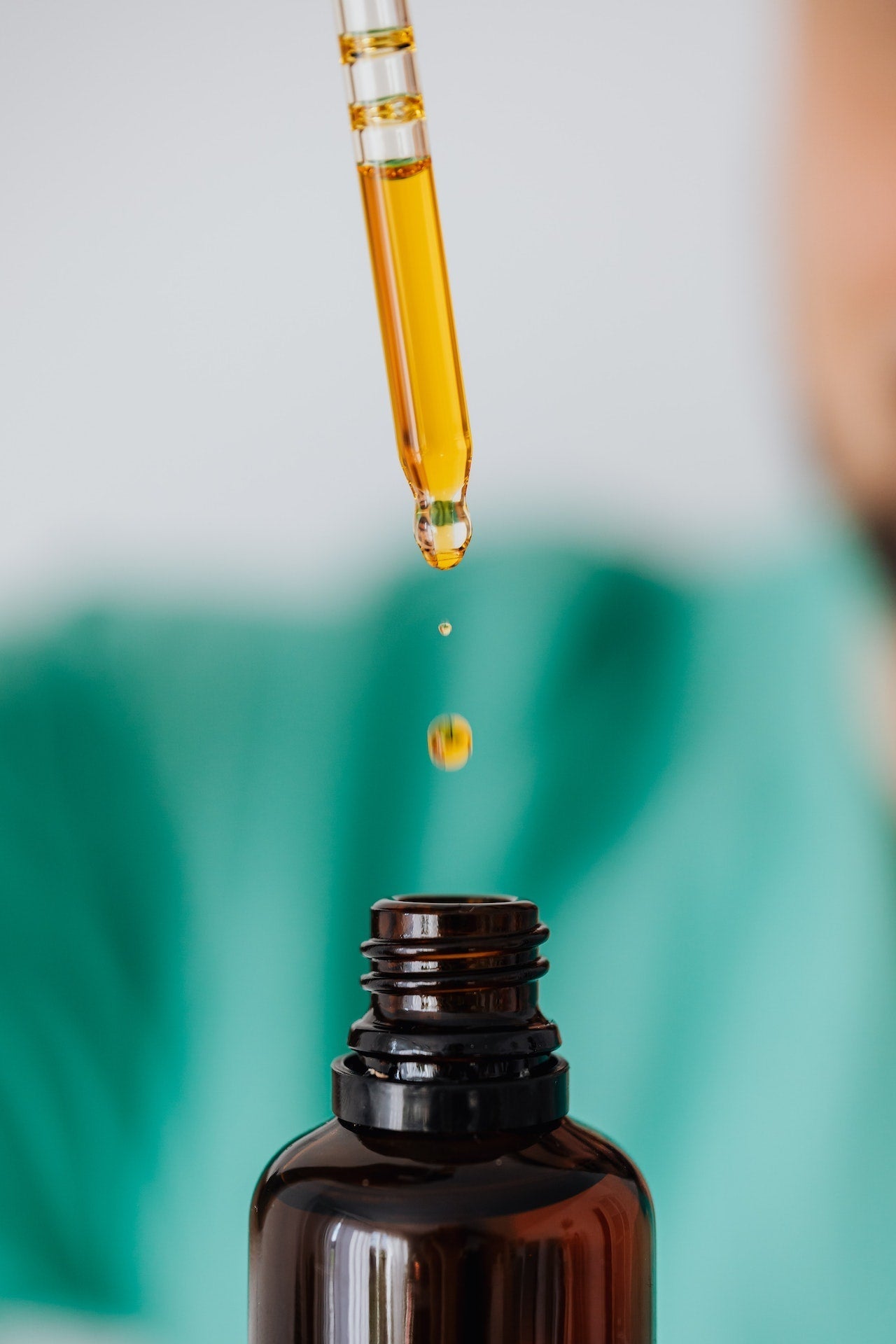If you’ve been looking at ways to detoxify heavy metals from your body, you’ve most likely come across a solution known as chelation therapy. Chelation therapy has a rich history of being used in detoxifying, dating back to the 1930s.
But what exactly is chelation therapy, how is it used, and what else do you need to know before considering it? Like many therapeutics, chelation therapy has a variety of applications, including side effects, efficacy rates, and durations.
This article explores all you need to know about chelation therapy.
What Is Chelation Therapy?
Chelation therapy is the preferred method for treating heavy metal poisoning. This includes acute toxic metal poisoning from arsenic, iron, mercury, lead, uranium, plutonium, and many others.
Chelation therapy can be administered by IV chelation therapy, muscular injection, or orally. How chelation therapy is administered often depends on the chelating agents and the type of poisoning.
Currently, there are no over-the-counter chelation therapies available. If prescribed chelation therapy, the patient will have this therapy administered under the close supervision of a doctor to mitigate any complications that may arise.
How Does Chelation Therapy Work?
When a patient undergoes chelation therapy, chelating drugs are administered to the body. These chelators seek out and bind themselves to heavy metal agents in your bloodstream. Once attached, the chelator and heavy metal travel to the kidneys and are then filtered out as waste through urine.
In simple terms, chelators help to expedite the natural excrement of heavy metal toxins and aid in reducing the symptoms associated with heavy metal poisoning.
When Was Chelation Therapy First Discovered?
Chelation therapy was discovered by German scientist Ferdinand Munz back in the early 1930s. At that time, Munz attempted to synthesize a replacement for citric acid to be eventually used as a water softener. Through his experiments, Munz created ethylenediaminetetraacetic acid, or EDTA.
In Munz’s experiments, EDTA was able to bond to iron and calcium present in water and aid in their removal. When applied, EDTA can remove the water scale and reduce water hardness.
During World War II, University of Oxford chemists hypothesized that chelation therapy might be a valuable antidote to lewisite, an arsenic-based chemical weapon. Around this time, chelation therapy was also proven to be a successful antidote to lead poisoning.
During WWII, chelation therapy treated workers exposed to lead through paint and battery manufacturing. Subsequent uses for chelation therapy, specifically for administering EDTA, proved helpful in combating cardiovascular disease.
What Type Of Chelation Drugs Are Available?
Since the discovery of EDTA chelation therapy by Ferdinand Munz, several other chelators have been synthesized and used to treat heavy metal toxicity. Here are a few of the most notable findings throughout chelation therapy’s history:
Dimercaprol (BAL): Used to treat acute arsenic, mercury, lead, and Lewisite poisoning. BAL was specifically created to combat Lewisite poisoning via chemical warfare in WWII.
Dimercaptosuccinic Acid (DMSA): BAL was eventually modified into DMSA, which had fewer adverse side effects. The use case for DMSA remains the same as BAL treating arsenic, mercury, and lead poisoning.
Dimercapto-propane sulfonate (DMPS): Used to treat severe and acute cases of arsenic and lead poisoning.
Penicillamine: Mainly used to treat copper toxicity, though occasionally used to treat gold toxicity, arsenic and lead poisoning, and even rheumatoid arthritis.
Ethylenediamine tetraacetic acid (CaNa2-EDTA): Used to treat lead poisoning.
Deferoxamine, Deferasirox, and Deferiprone: Used to treat iron poisoning and acute iron overload.
As of the time of writing, the German Environmental Agency, Umweltbundesamt, states that DMSA and DMPS are the two most effective and safe chelating drugs.
What Are The Potential Side Effects of Chelation Therapy?
Chelation therapy has many potential side effects ranging from mild to severe. On the gentler end of the spectrum, patients undergoing chelation therapy may experience headaches, nausea, vomiting, gastrointestinal upset, fever, and/or chills.
Severe side effects of chelation therapy include organ damage (specifically to the kidney or liver), seizures, sudden drop in blood pressure, severe allergic reactions or hypersensitivity, anemia, respiratory failure, and even death.
Due to the potential severity of side effects, chelation therapy is only administered under the close supervision of a doctor. It is rarely used to treat anything beyond heavy metal toxicity.
Where To Find A Chelation Therapy Provider?
As mentioned, chelation therapy is available only under the watchful eye of an experienced physician. There are no over-the-counter options for chelation therapy.
Chelation therapy drugs must be prescribed, generally as a course of treatment. Before prescription, doctors will perform various tests to establish the presence of toxins in your body. If tests reveal a high enough toxicity, your doctor will discuss whether you are a candidate for chelation therapy.
Generally speaking, chelation therapy is performed by medical doctors (MDs); however, alternate health care providers, like naturopathic doctors, sometimes work with MDs to offer this therapy. As with all drugs, assess your benefits and risks before proceeding.
Is Chelation Therapy Expensive?
As with all drug therapies, there is a cost associated with chelation therapy. Chelation drugs are not generally administered as a single dose. Instead, doctors will often prescribe a course of chelators to be taken multiple times a week over months.
The reason for prolonged use is to mitigate any potentially harmful side effects while clearing your body of toxic levels of heavy metals.
Because of the number of drugs required, length of chelation treatment time, and the potential for doctor or nurse supervision, chelation therapy can cost upwards of $5000 when administered intravenously or intramuscularly. This type of therapy is usually not covered by health insurance providers.
How Do I Know If Chelation Therapy Is Right For Me?
Many people have been exposed to heavy metal toxicity, though not everyone will require chelation therapy to clear those toxins from their systems.
If you suspect that you may have a build-up of toxic heavy metals in your body, you will likely be experiencing one or more of the following symptoms:
- Vomiting
- Diarrhea
- Weakness/Fatigue
- Numbness in your extremities
- Headaches
- Dehydration
- Anemia
- Sleep Loss
These symptoms can range from mild to severe depending on the length of exposure, how much of the toxin has been absorbed into your body, the type of metal, and your overall health, including age, pre-existing conditions, and genetic factors.
To be clear, chelation therapy is only prescribed for acute and severe cases of heavy metal poisoning. In both scenarios, it is highly likely that you already understand the cause of your heavy metal poisoning and how it has impacted your overall health.
Using Chelation Therapy to Treat Other Ailments
Several doctors and scientists believe that chelation therapy can be used to treat ailments and diseases beyond heavy metal detoxing. In most cases, chelation therapy has not been a proven success and is often labeled “pseudoscientific.”
In some instances, administering chelation therapy to treat other diseases and behavioral disorders can artificially raise the levels of toxins found in a patient’s urine. This provides the illusion of efficacy when the use of chelation therapy would have otherwise been deemed inappropriate.
Here are several unproven use-cases for chelation therapy and the risks associated with it:
Heart Disease
Extensive studies have been conducted on the use of chelation therapy as a means of preventing cardiovascular disease, coronary artery disease, and heart attacks. The most important study was conducted on adults over 50 with diabetes.
This study found that a course of chelation therapy seemed to reduce the event of a cardiovascular episode amongst participants.
Upon medical review, the American College of Cardiology found these results surprising and incidental, noting that the benefits are more likely attributed to a healthy lifestyle mandated alongside any patient undergoing chelation therapy.
Autism
In a rush to find a cure or suitable therapy for autistic children, some practitioners have opted to prescribe chelation therapy. In 2005, the American Center For Disease Control reported the deaths of two children, one of whom was autistic, due to chelation therapy. Currently, there is no proof of the effectiveness of chelation therapy in treating autism, and its administration has been labeled unethical.
Alzheimer's Disease
Researchers now believe that Alzheimer’s may be caused, in part, by the build-up of the proteins beta-amyloid and tau around brain cells. Some researchers theorize that chelation therapy may help dissolve beta-amyloid and, thus, help restore brain function.
Currently, there is not much evidence to support the use of chelation therapy in this scenario. However, research remains ongoing.
Parkinson’s Disease
Many people with Parkinson’s disease have excess iron in their brains. Since chelation therapy has been used to treat acute iron overload, researchers hypothesize that it may be a suitable treatment for Parkinson’s.
At the time of writing, there is not enough clinical evidence to support the use of chelation therapy as an effective tool in the fight against Parkinson’s Disease.
What Alternative Treatments Are There For Heavy Metal Poisoning?
It is entirely understandable if you have some reservations about pursuing chelation therapy.
For acute and severe cases of heavy metal poisoning, the benefits of seeking chelation therapy can not be overstated. In those cases, chelation therapy is a suitable, necessary, and sometimes life-saving treatment plan.
However, suppose you’re one of the many people who are simply curious about how to eliminate potentially dangerous loads of heavy metal toxins. In that case, there are several courses of treatment that you can pursue aside from chelation therapy.
Many people opt to adjust their lifestyles first. Scrutinizing your diet can help protect you from ingesting toxic metals found in food sources.
Choosing whole foods instead of processed foods, upping your intake of healthy fats, and investing in foods and supplements that support gut health, like bone broth and collagen, can go a long way to protecting you against heavy metal toxins.
As we know, many heavy metals are excreted from our bodies through urine. We must drink the recommended amount of water per day to help our body perform this function.
In addition, heavy metals can also be excreted each time you have a bowel movement. A diet rich in fiber and leafy greens can ensure this system functions to its highest potential.
Lastly, heavy metals are also excreted through sweat, making exercise a great option. A good session at the gym, a long run, or even time spent in a sauna can help expedite this process.
The Benefits of Detox Supplements
In addition to lifestyle changes, a detox supplement can speed up your body’s natural detoxification process while also functioning as an added layer of protection.
High-quality detox supplements can be found as sprays, such as the Advanced TRS Detox Spray, tinctures, capsules like cleansing and immunity boosting Paratrex, powders, and liquids such as Global Healing’s Heavy Metal & Chemical Cleanse.
Detox supplements are highly effective in releasing a build-up of toxins in your body and preventing dangerous toxins from accumulating again. Several benefits come along with integrating detox supplements into your health care routine, including increased energy and mental wellness and improved digestion.
Chelation Therapy: What To Know
If you’ve made it this far, you undoubtedly have a well-rounded overview of chelation therapy.
To summarize, chelation therapy is best used to treat severe and acute heavy metal poisonings. Chelators seek out and bind themselves to metals in your body and help with excretion. This can restore balance and alleviate symptoms associated with heavy metal toxicity.
Chelation therapy is not for everyone, and if you don’t fall into the acute or severe category, there are many alternative therapies to discover.
Chelation therapy is just one weapon in a robust arsenal to combat the effects of heavy metal toxicity. With the help of a doctor or other healthcare practitioner, you’ll be able to determine the most appropriate method for you.



